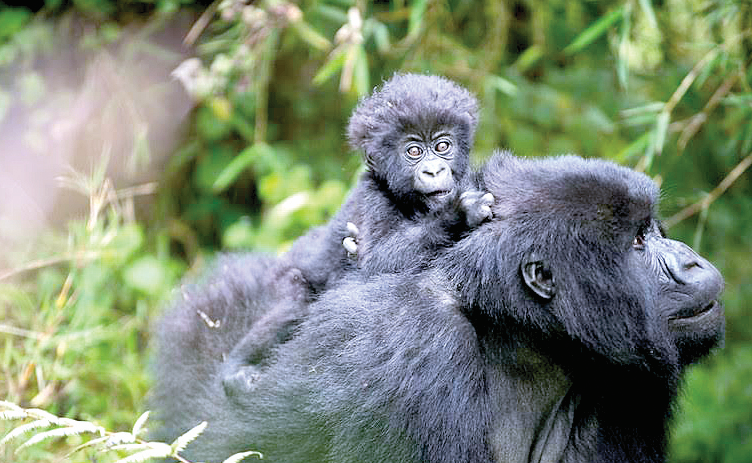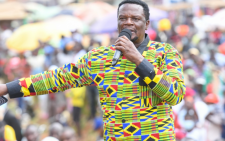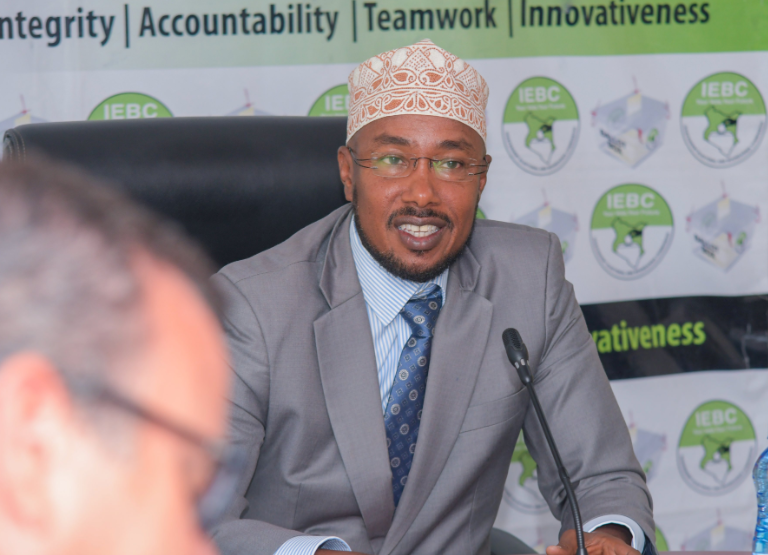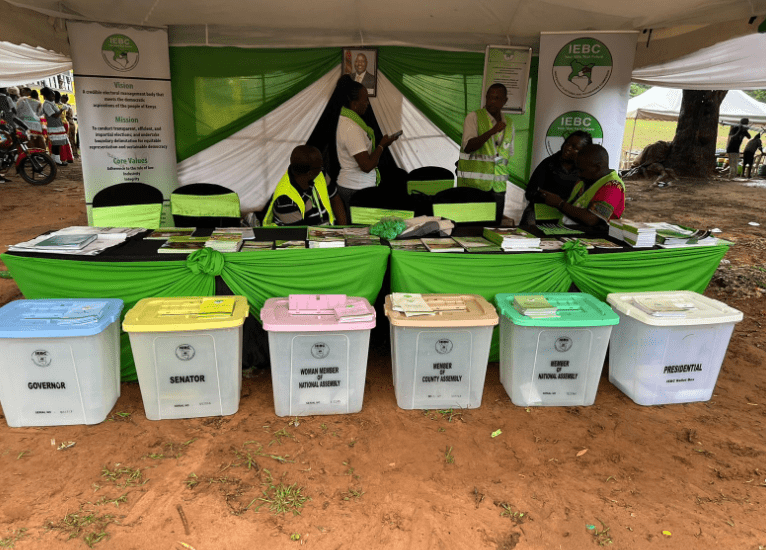How gorilla naming ceremony is boosting Rwanda’s ecotourism

Watching a silverback gorilla feed is a truly awe-inspiring spectacle.
It’s a lesson on patience and calmness as what stands out during this remarkable moment is the silverback’s calm and serene demeanor.
They do not rush the process and their focus is on them acquiring this vital sustenance for survival. This composure speaks to the silverback’s wisdom and experience, underscoring the harmony of the gorilla community.
Here, I was in the middle of Volcanoes National Park in Rwanda, which offers a pristine and captivating backdrop for observing a silverback in its natural habitat.
The towering trees, the dense foliage as well as an orchestra of wildlife sounds is the perfect atmosphere where nature’s splendid show manifests. The dark clouds too were gathering in the sky, ready for a heavy down pour, typical of the Volcanoes unpredictable weather.
“When a silverback embarks on its quest for sustenance, it does so with a level of discernment and caution. The act of eating leaves is the evidence of the silverback’s intelligence and selectivity.
“They carefully navigate the forest floor, expertly choosing foliage that is most beneficial to their dietary needs,” explained Emmanuel Harerimana our ranger and tour guide as we watched in amazement.
Silverback gorillas can weigh from 135 kgs to 220 kgs. The male mountain gorillas are always bigger than the female mountain gorillas and can measure up to six feet tall from toes to the head. With their hands wide open, the silverback mountain gorillas can measure up to 1.52 metres and some can grow up to 2.25 metres.
Human-like behaviours
The males can eat up to 30 kgs of vegetation per day, with females eating 18 kgs. They spend more than 50 per cent of their time feeding and foraging.
When you look at them, gorillas display many human-like behaviour and emotions, such as sadness and laughter. It is said that they share 98.3 per cent of their genetic code with humans, making them our closest cousins after chimpanzees and bonobos.
Another thing is that one if not permitted to touch the gorillas and you are requested to wear a mask while watching them.
Watching them makes you forget how tough the climb was to get to their current location. The region is mountainous and when you get to the forest, one has to battle with the dense undergrowth and stinging plants before reaching to the gorillas.
In addition, the high altitude, the steep and slippery trails will make your knees beg for mercy, but it’s definitely worth it once you catch a glimpse of them. If you are in reasonable shape and wear the correct type of clothing, such as supportive water-proof boots and a rain coat with long-sleeved shirt and trousers, then you are good to go for the trek.
Around Virunga Massif, gorillas have grown from 250 individuals in the 1980s to over 600 presently. Rwanda has about 10 habituated mountain gorilla families and they comprise of Susa, Sabyinyo, Amahoro, Karisimbi, Umubano, Hirwa, Kwitonda, Agashya, Bwenge as well as Ugyenda.
The Virunga Mountains are a chain of volcanoes in East Africa, in the area where Rwanda, the Democratic Republic of the Congo, and Uganda meet. In Kinyarwanda, Virunga comes from the word ibirunga, which means volcanoes. The Virunga Mountains that mark the southern sector of the park consist of eight major volcanoes, most of which are dormant.
The threats that the gorillas face in these forests, include the increasing population that makes the park too small to contain them. The second one is poaching where the gorillas are caught by the snares and traps that the locals set up to catch antelopes and other smaller wildlife.
The baby gorillas end up bleeding to death and despite the fact that the adult gorillas know how the traps look like, some have their hands caught and they end up bleeding to death as well.
At the naming ceremony dubbed Kwita Izina, the infant mountain gorillas born during the previous years are celebrated and Rwanda showcases its conservation efforts.
Inspired by the ancient Rwandan tradition of naming a baby soon after its birth, the ceremony brings together people from all walks of life: from the celebrities to the locals who live close by and are the guardians of the gorillas.
It also showcases the success of Rwanda’s conservation efforts comprising of Rwanda’s successful low volume, high value approach to gorilla tourism that has been instrumental in ensuring that the population of the gorilla grows and offer better gorilla trekking safaris to guests.
Current tourism figures show that Rwanda generated Sh36.5 billion (US$ 247 million) in the first half of 2023, a 56 per cent increase compared to Sh23.7 billion (US$158 million) in the same period in 2022.
Strength and beauty
This was the 19th edition and was held on the foothills of Volcanoes National Park in Kiningi Musanze District and was attended by several dignitaries, celebrities, conservationist as well as the local people living around the home of the endangered species.
Under the theme “Conservation is Life”, the ceremony saw the naming of 23 baby mountain gorillas born in the last 12 months. About 374 baby gorillas have been named since the beginning of the naming ceremony first held in 2005.
“I’m so honoured and humbled to be in the country and we were so fortunate enough to trek up the mountains and meet our gorilla family,” said Sabina Elba who together with her husband Idris, named their child Narame, which means life.
“I was reminded that the gorilla not only represent the strength and beauty of Rwanda, but also that of Africa. The child we are naming is from Mutogo family and the mother is Mudakama.
“We have decided to name the baby Narame which means life. The mother has previously lost two children and we hope more than anything that this child lives a long life,” she added.
Her Excellency the First Lady of Rwanda, Jeannette Kagame noted the significance of the mountain gorillas as they represent more than just a source of revenue, but are custodians of nature. She emphasised on Rwanda’s continuous efforts in investing in conservation even as it develops.
“Mountain gorillas represent more than a source of tourism, or adventurous entertainment. To us, our gorillas are the custodians of a nature we cherish.
“Rwanda’s efforts to protect its biodiversity have been multi-faceted, and multi-purposed. From local and international advocacy, to the creation and expansion of national parks, no stone is being left unturned,” she said.
“Since Kwita Izina began, 374 baby mountain gorillas have been named, and the population in the Virunga Massif has grown by 23 per cent, according to the most recent census. This remarkable achievement would not have been possible without the communities living around the park, dedicated conservationists and researchers as well as visionary leadership.
“That is why today is also a celebration of the transformative power of conservation in local communities.” said Michaella Rugwizangoga, Chief Tourism Officer, Rwanda Development Board.
Visiting the recently opened Ellen DeGeneres Campus of the Dian Fossey Gorilla Fund assists in understanding the whole concept of gorilla conservation in Rwanda.
It was built 12 kilometres to the Volcanoes National Park and was constructed in the memory of a renowned Conservationist Dian Fossey who dedicated her life to the protection of gorillas. She was killed in 1985 in the same area, and her tomb is also one of the visited sites in the area.
Here there are displays of skeletal portraits of both human and gorillas, games in the gallery that people can play to understand the behaviour of humans.
You can also get to learn more about the community at the Gorilla Guardian village, which is also known as Iby’Iwacu cultural village meaning ‘treasure of our home’. Situated in Kinigi in the Musanze district of Rwanda gives you a rare chance to interact with the villagers, their environment, culture as well as traditions.












